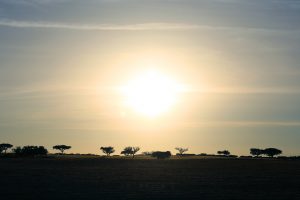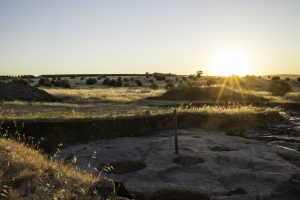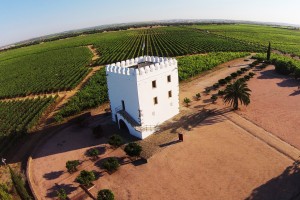The Perdigões complex has a number of different spaces, including a necropolis and megalithic ceremonial grounds. The impact of Perdigões on the territory, and the remaining population of Álamo river in particular, indicates that it may have been a place for socialization but also one with sacred aspects and not just for everyday living.
A place of both life and death, the complex was built and developed in a natural amphitheatre facing the landscape of the Ribeira Álamo valley and the rising sun, on a horizon dominated by Monsaraz.
People gathered here. Locals, neighbours or others, coming from afar, bringing objects and produce with them. People worked hard lifting standing stones and digging deep ditches that delimited large areas, forming paths and creating significant visual perspectives. Here, there was everyday life. However, it was an everyday life charged with symbolism and ceremonies that speak to us of a world very different to our own.
The solar cycle was even more important to prehistoric communities when they became increasingly dependent on agriculture. The basis for the cyclical measurement of time (as the Moon would also be), sunrise and sunset were also a metaphor for life and death, birth and demise, perpetual rebirth and eternal return.
As such, east was always an important direction to Neolithic communities, which organised their funeral megalithic monuments, cromlechs and other constructions, such as enclosure ditches, in relation to it. Some of these, more than just facing east, used their architecture to indicate important moments of the solar calendars, such as the solstices and equinoxes.
This is the case of the outdoor enclosures at Perdigões, whose entrances align with the summer and winter solstices at sunrise. Via these entrances, the sun’s first rays would penetrate on the longest and shortest day of the year, which possibly involved ritualized celebration, bringing together people from the region and beyond.


